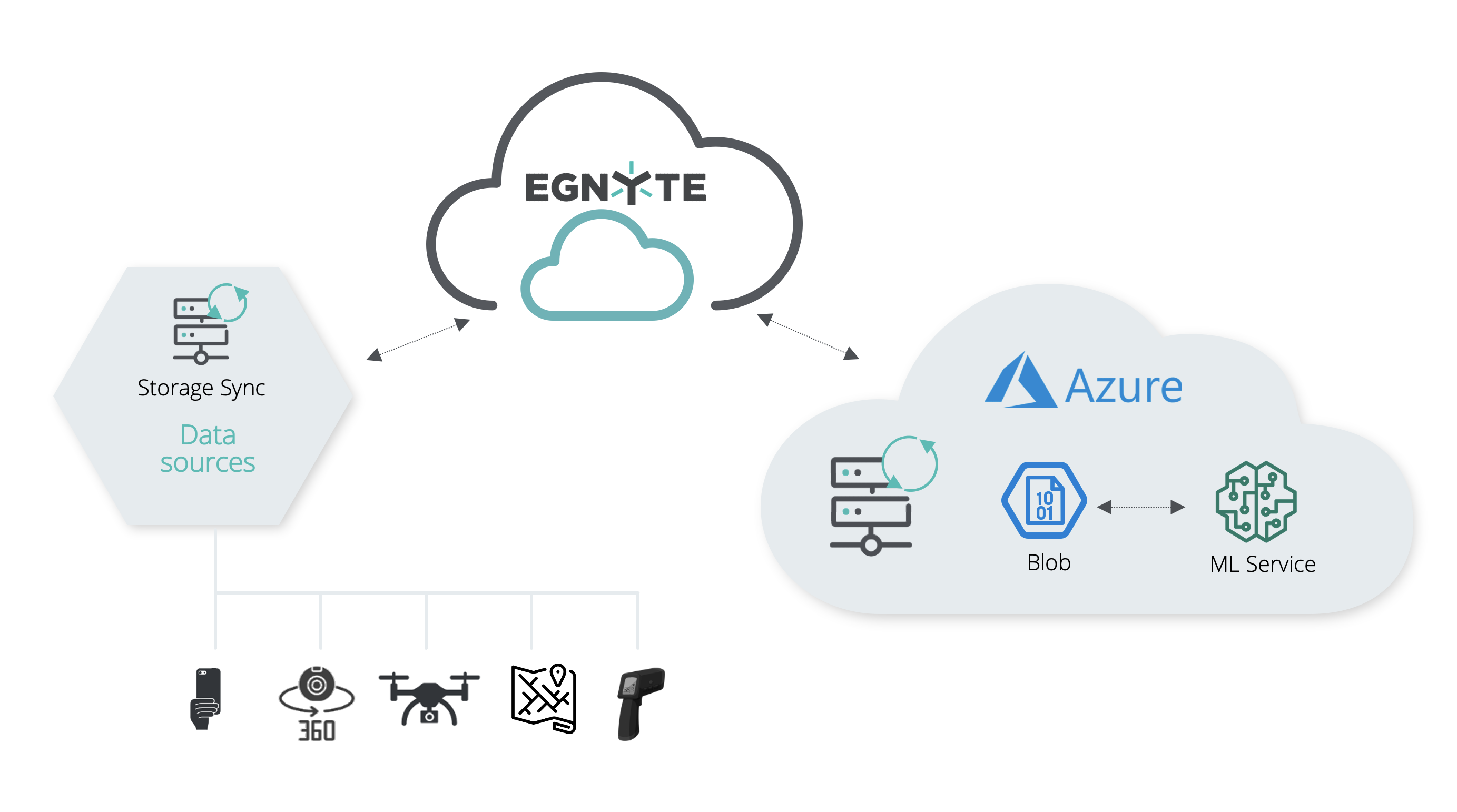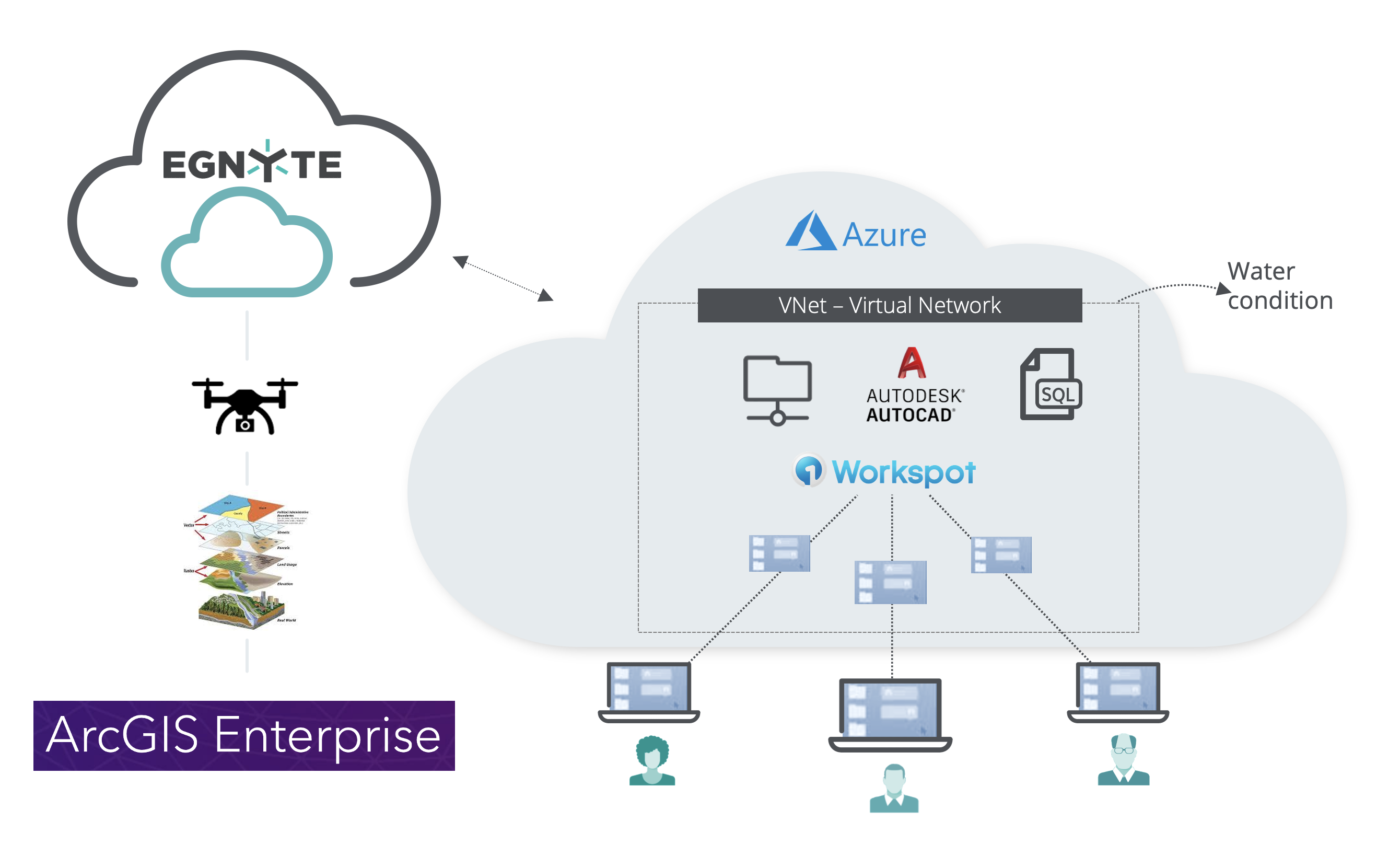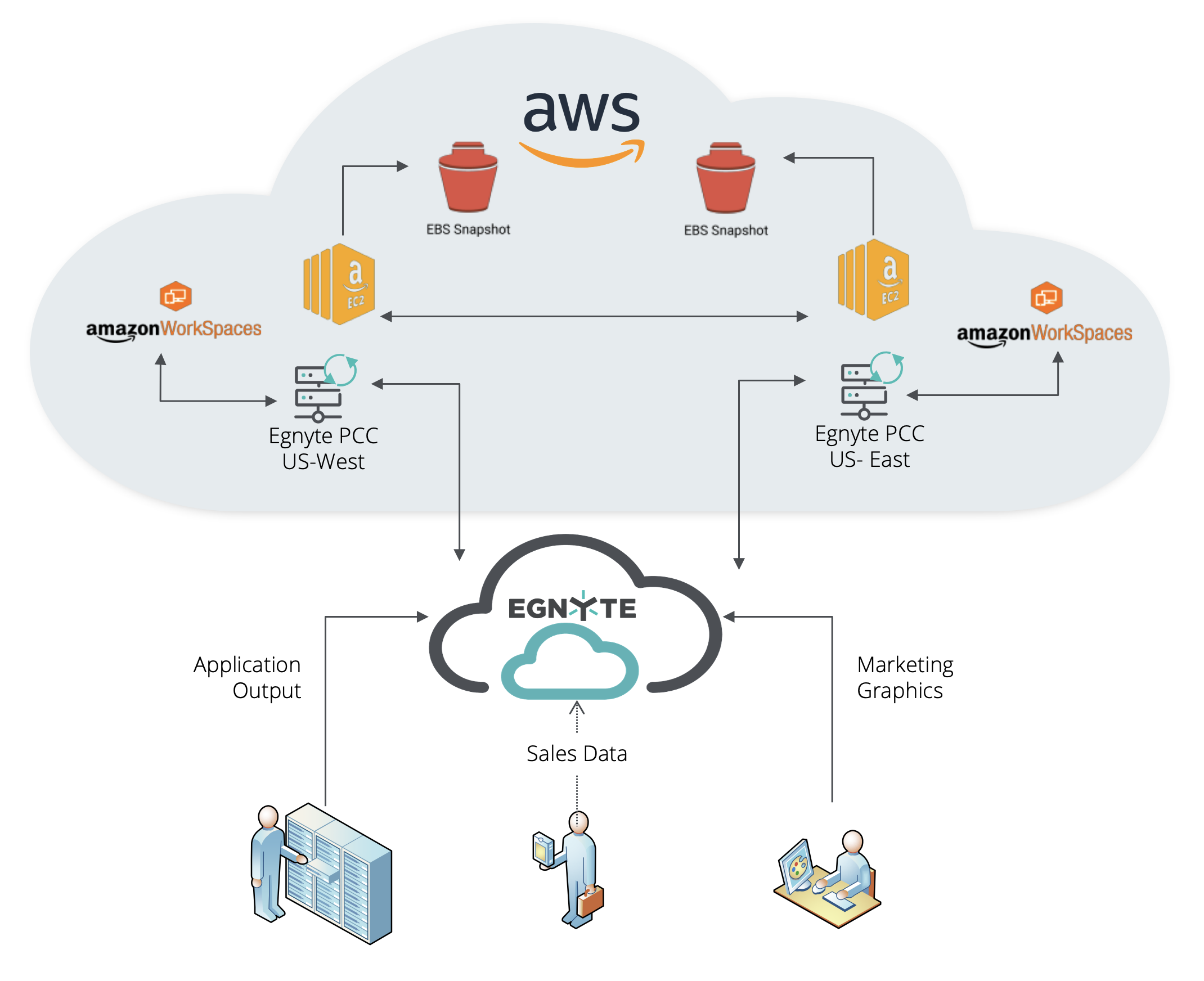
3 Ways Egnyte Helps AEC Firms Tap Into the Public Cloud
The vast majority of businesses today are in the cloud. That includes industries historically slow to adopt new technology, like architecture, engineering and construction (AEC).
However, recent economic and workplace disruptions have pushed AEC firms more aggressively into the public cloud waters. They're looking for cost effective ways to access compute power, more efficiently process data, and provide access to files and applications. They also want to tap into advanced analytics to draw insights from data and manage it.
But in order to take advantage of the power of clouds like Amazon Web Services (AWS) and Microsoft Azure, companies must find solutions that allow a simple, secure and efficient way to move data to and from the public cloud, without losing proper visibility and control over the data, all while maintaining the proper permission rights.
The Egnyte Public Cloud Connector (PCC)
Egnyte’s Public Cloud Connector is a simple way to automatically sync specific information from the Egnyte cloud into a preferred public cloud environment, like AWS and Azure. PCC automates the deployment of Egnyte’s hybrid device into a public cloud environment and provides near real-time sync of files between Egnyte and the public cloud. In addition, it creates a point-in-time snapshot of information from a file system structure to an Azure blob or Amazon S3 bucket with a click of a button. This brings the files that users interact with closer to the compute environment or to their workspace so employees can leverage PCC for a variety of use cases.
Three Common Public Cloud Use Cases for AEC
Let’s consider three common scenarios in which AEC firms are taking advantage of the cloud:
- Processing large digital images
- Leveraging remote office architectures that host other applications and services
- Data backup and disaster recovery
Processing Large Digital Images
Through the increased use of drones, scanners, and mobile devices, AEC firms collect reams of imagery and video. These large datasets make it difficult to migrate all the information to where it can be sorted and processed while still maintaining the security and the permission rights to the data.
Public cloud computations allow a variety of options, from dynamic image resizing to analysis of images to identify jobsite safety situations such as spilled hazardous material, standing water, broken windows, personnel without hard-hats or harnesses, and other elements that present business liabilities—capabilities offered by Egnyte partners such as Smartvid.io. Dynamic image resizing creates much smaller .pdf files that don’t require the same level of detail, making them easier to access and share. This dynamic capability allows for flexibility in the project development process when exact sizes are not known in advance.
To enable this type of capability, the data sources (video, imagery) must be ingested into a local server running Egnyte Hybrid Device in the field. The file is then automatically uploaded into predefined folders on the Egnyte platform, and from there it is migrated to either Azure or AWS. With PCC, you can set up this connection in only a few clicks, making it simple to sync and then transfer the data so it can be processed and transferred back to the Egnyte cloud, where it is immediately available to all eligible users.

Leveraging Remote Office Architectures
Construction companies are not strangers to the need to support remote workers wherever they are. But many firms still struggle with providing anytime, anywhere, any device secure access to critical files and applications, forcing employees to either delay work or travel to specific locations to get access.
Remote offices, built with the right solutions, can help teams access their files and applications through a predefined environment such as Workspot running on Azure or AWS’ WorkSpaces. Workspot and WorkSpaces act as a virtual desktop, hosting key applications like Autodesk, providing access to each user, and allowing them to leverage the power and scalability of the public cloud when running large projects.
The problem, historically, is that project files were not easily accessible within the working environment and users had to choose between the benefits of the security and permissions of the file storage provider and the benefits of the computation environment in the public cloud. PCC can remove that barrier.
PCC allows companies to connect their Egnyte instance to the cloud hosting their virtual desktop. Egnyte then facilitates the syncing of content from external data sources, which are collected on local hybrid devices then passed to the Workspot or WorkSpaces environment. In this manner, Egnyte makes it easy for companies to manage their thin clients and reap all the benefits of data security and organizational permission structures, while enabling high compute consuming algorithms and team collaboration on a variety of applications.

Data Backup and Disaster Recovery
AEC firms have to maintain accurate files for years to comply with regulations and contractual obligations. This increases the importance of basic data hygiene, like backup and disaster recovery, in order to avoid potential litigation. In addition, the recent rise of ransomware attacks in the industry has made it critical that data can be easily recovered in order to reduce the impact of a successful attack. As many firms turn to the cloud to support these requirements, they are challenged with the often-manual process of identifying the right data to protect, and migrating it to their storage solutions.
While Egnyte provides a complete backup and recovery solution as part of its standard offering, some customers still prefer traditional storage options available within AWS and Azure. In this scenario, data is stored directly in Egnyte. Once tagged for public cloud storage, PCC—residing on an Azure or AWS availability zone—takes a snapshot of the data and syncs that relevant information to different zones creating a regional backup. The data can also be sent to another EC2 or S3 instance.

Egnyte’s Public Cloud Connector makes it easy to connect your Egnyte platform to Microsoft Azure and AWS. With point-and-click functionality, the time consuming, manual process of setting up a sync between cloud content storage and the public cloud compute is made simple and quick. With Egnyte and PCC, companies get the best of both worlds—all the power of the public cloud combined with real-time file access, sharing, and data syncing at a fraction of the cost.
About Egnyte for Construction and Engineering
Egnyte for Construction and Engineering is the only cloud governance solution designed specifically with AEC firms in mind, providing a better way to collaborate from a secure, centralized repository. With hundreds of industry specific application integrations, including Autocad, DroneDeploy, Plangrid, Procore, Autodesk, Bluebeam, Smartvid, StructionSite, Raken, and Holo Builder, companies get a single access point for all of their critical content. Egnyte provides a fast, easy and robust solution to all your file sharing needs, helping to keep your teams in sync across every phase of the project.






